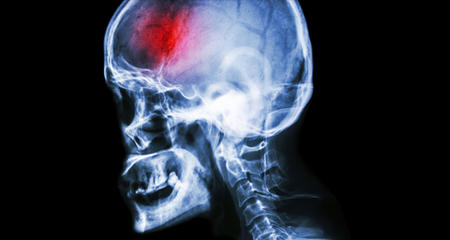
Arteries and veins leading to the brain can be vulnerable to narrowing (stenosis), often caused by atherosclerosis. Atherosclerosis is the buildup of fatty substances and cholesterol deposits (plaque) that accumulate in the inner lining of blood vessels. If blood clots form, dislodge and flow into the brain, stroke and trans ischemic attacks (TIA) can occur.
For patients with atherosclerosis in their brain, neck or spine, minimally invasive balloon angioplasty and stenting may be recommended. Balloon angioplasty uses catheter-based endovascular techniques to reach the inside of the blood vessel at the narrowing. A balloon is then temporarily inflated to expand the narrow spot and restore normal blood flow. In addition, a thin mesh tube, or stent, may be placed at the location of narrowing to more permanently prop it open.
- Intracranial angioplasty and stenting may be used to open narrowed arteries inside the brain, preventing strokes in patients for whom standard medication had failed.
- Extracranial angioplasty and stenting is performed to treat narrowing in vessels outside of the brain.
- Carotid artery angioplasty and stenting is used to restore blood flow in the carotid artery of the neck.
- Vertebral artery angioplasty and stenting is used to treat patients with stenosis at the origin of the vertebral artery.
The endovascular approach may offer shorter treatment time, less pain and faster recovery than traditional open surgical procedures.
Balloon Test Occlusion
The four major arteries that supply blood to the brain are usually connected to allow adequate blood flow to the brain even if one of them is blocked. Patients with an aneurysm or tumor may require treatment that closes one of the arteries. A balloon test occlusion helps determine if an artery can be closed temporarily or permanently without impacting brain function. An artery can be temporarily blocked with a small balloon while X-ray imaging creates detailed views to study the blood flow. A clinical examination also can be performed to evaluate for symptoms.
Recognized as High Performing by U.S. News & World Report
Froedtert Hospital and Froedtert Menomonee Falls Hospital are recognized by U.S. News & World Report as high performing in stroke care.More to Explore





